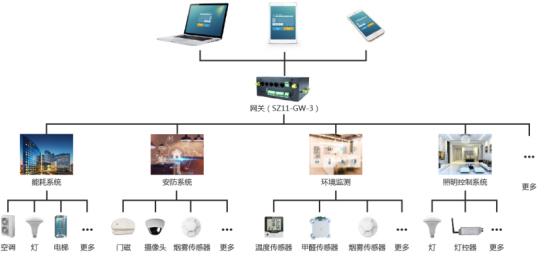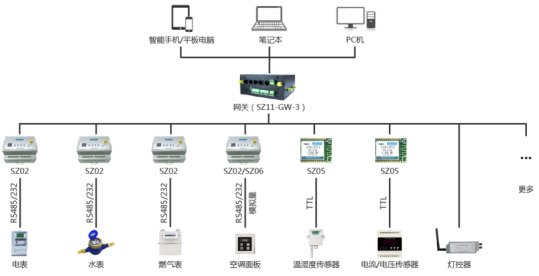
First, the building energy-saving background
China is the world's largest construction market, with a total housing area of more than 40 billion square meters. At present, more than 95% of the newly built buildings in China are high-energy buildings; while only 4% of the existing buildings have adopted energy efficiency measures, China has become the world's second largest energy consumer. From the perspective of building energy consumption in recent years, China's building energy consumption has shown an increasing trend year by year. The huge building energy consumption has become a huge burden on the national economy. Therefore, comprehensive energy conservation in the construction industry is imperative.
Second, building energy saving needs
China's public building energy consumption accounts for about 70% of the total energy consumption of public institutions, of which central air-conditioning energy consumption accounts for about 50% of public building energy consumption, lighting energy consumption accounts for 25% to 35% of the entire building energy consumption, in addition to elevators. The energy consumption of pumps, compressors, office equipment, etc., and the energy consumption of various electromechanical equipments have a large energy-saving space.
At present, most of the buildings are managed manually. The equipment management of elevators, air conditioners, lighting fixtures and other buildings is extensive. The real-time data on water, electricity, heating, gas and other related energy consumption in buildings cannot be clearly grasped and analyzed, resulting in great Energy waste.
In this regard, Shuncom launched a building energy-saving IoT solution. The program provides comprehensive energy-saving products and engineering services for shopping malls, government office buildings, schools, hospitals, hotels, airports and other large public buildings.

Third, building energy-saving Internet of Things solution
Shuncom building energy-saving IoT solution is based on wireless communication technologies such as Zigbee (LoRa). It is equipped with corresponding sensing devices such as temperature and humidity sensors, current and voltage sensors through Shunzhou intelligent intelligent gateway, wireless connection and control equipment. Illumination sensor, switch/analog acquisition device, etc., finally pass the collected energy consumption data to the server and cloud platform to achieve precise control of energy consumption, fine management, and high efficiency.
Fourth, the composition of the intelligent building Internet of Things system

The intelligent building IoT system consists of energy consumption system, security system, environmental monitoring, lighting control system, etc. Each system monitors and manages the electronic motor equipment and environment in the building to realize the intelligent building.
Five, building energy-saving IoT hardware solutions
The building energy-saving IoT system is mainly composed of four parts: the sensing layer, the transport layer, the application layer, and the terminal layer.
(1) sensing layer, including data acquisition module, current, voltage sensor, temperature and humidity sensor, street lamp controller, electric meter, water meter, gas meter, etc.;
(2) Transport layer, including ZIGBEE+4G or LoRa+4G gateway devices, Zigbee (LoRa) wireless connection devices, wireless transmission networks, etc.;
(3) The application layer is mainly the building energy consumption monitoring and management platform, which is responsible for monitoring, managing and analyzing the real-time data of the entire IoT system acquired by the sensing layer;
(4) Terminal layer refers to smart phones, ipads, computers, PCs, etc., which can obtain real-time operating data and fault alarm information of the devices in the system in time.

Sixth, building energy-saving IoT system function
1, data transparency
The comprehensive perception of the main energy consumption points of the building is the basis for realizing building energy conservation. The layout of the sensing equipment has become an important part of the implementation of building energy-saving IoT projects.
On the basis of the existing water, electricity and gas energy consumption network, energy consumption data can be realized by configuring sensing devices integrating functions of sensing, communication, calculation, self-checking, etc. in energy metering nodes such as water meters, electricity meters and gas meters. Accurate collection and transmission, to achieve full transparency of energy consumption data, greatly simplifying the construction process.
In addition, the temperature, humidity and illumination sensors are installed at the main nodes of the building to automatically sense the indoor heating and cooling, laying the foundation for providing humanized services.
2, energy consumption analysis
Install management software for the building management department, collect and analyze the data collected by the sensing equipment, and explore various energy consumption laws such as electricity, water supply, and air conditioning, and find out the time, space, and behavior of energy normal use and waste.
Compared with traditional building energy-saving methods, energy consumption analysis provides detailed and quantitative support data for energy-saving control, reducing the subjective decision-making of managers.
3. Energy saving control
On the one hand, based on the energy consumption analysis, based on the energy consumption data of each unit in the building, the energy-saving audit work can be carried out; on the other hand, according to the data analysis, the energy consumption monitoring alarm strategy can be established, and the energy consumption is abnormal. Under the timely warning, remotely close the critical or empty energy-consuming state related equipment through the PC or mobile phone to reduce waste.
The Internet of Things brings not only this closed loop, but also the equipment management functions such as monitoring and managing the three-dimensional network, equipment status monitoring, fault diagnosis, and critical alarms in the closed loop formation process.

Shuncom News
Customer Service

TEL:021-33933988
FAX:021-33933968-6808
Mail:sales@shuncom.com
Complaints & Claim:18918151980
Address: Building 1, No.88 Shengrong Road, Zhangjiang, Pudong, Shanghai
Smart Solutions
IoT Products



